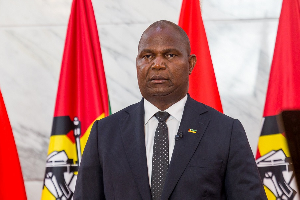Social protection is a conduit that is globally known and accepted as a potent means of mitigating the plight of the poor and vulnerable.
It has gained such wide acceptance due to the escalating levels of need globally, coupled with how expedient it appears to political actors and governance experts.
The International Labour Organisation (ILO) defines social protection as "the set of public measures which a society provides for its members to protect them against economic and social distress that would be caused by the absence of a substantial reduction of income from work as a result of various contingencies (sickness, maternity, employment injury, unemployment, invalidity, old age, and death of the breadwinner.)
The IMANI centre for Policy and Education last week premiered a documentary titled 'Beneficiaries' experience with Social Protection Programmes for poverty reduction in Ghana.
It highlighted the shared and varied experiences of grant-recipients under the Livelihood Empowerment Against Poverty (LEAP) programme. The documentary sought to go beyond presenting cold statistics, facts and figures rather highlight the 'human faces' behind the scheme.
Ghana has been administering a conditional cash transfer programme under the Livelihood Empowerment Against Poverty (LEAP) a programme that has been in operation since 2008. The programme has witnessed consistent growth in its adoption, from an initial 1,645 households in 2008 to covering 332,200 households in 2019.
Despite the laudable effort of government in not only sustaining but expanding the programme, critical challenges persist which must be addressed if the programme is not to be dumped to the scrapheap of 'almost-had' interventions.
Conditional Cash Transfer (CCT) programmes, which LEAP is modeled after, originated in Latin America with the aim of reducing poverty by making welfare programmes conditional on the receivers meeting certain criteria- ranging from enrolling children in school to registering health insurance.
The challenges facing the programme are not necessarily unique to it, but are systemic and a reflection of poorly implementing policies generally. For example, insufficient logistics, understand personnel, and the distance beneficiaries must travel to access the funds.
A single household beneficiary is entitled to 64 Ghana cedis (US$11.5) every two months - which is woefully inadequate if we are seeking to alleviate poverty.
Some of the recommendations include better targeting, because it has been discovered that some on the scheme do not qualify to be on it as they are either not as vulnerable, or are capable of working; and better integration with the NHIS so that beneficiaries do not have to use their stipend for basic healthcare, etc.
Furthermore , there is supposed to be an exit-plan to make beneficiaries less dependent on such schemes; so that they can be integrated into gainful employment through programmes like Planting for Food and Jobs.
General News of Monday, 3 February 2020
Source: Business & Financial Times
B&FT Editorial: LEAP needs better targeting to achieve objectives
Entertainment












